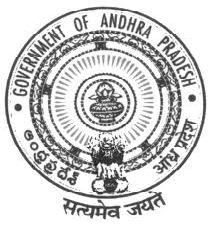Key Outcomes
/topics/wildlife
/topics/wildlife
Content and Media Courtesy: International Union for Conservation of Nature
This 116,500 hectare brackish lagoon separated from the Bay of Bengal by a long sandy ridge was added to the Ramsar List of Wetlands of International Importance in 1981.This was because the lagoon was facing serious degradation due to siltation and choking of the seawater inlet channel, resulting in the proliferation of invasive freshwater species, the decrease in fish productivity, and an overall loss of biodiversity [1].
This study by Institute for Social and Economic Change (ISEC) aims at understanding the livelihood patterns of fishermen within the Tungabhadra sub basin, a tributary of river Krishna located in peninsular India. Lack of integrated approach in development initiatives and water management plans warrants the need for Integrated Water Resource Management to support livelihoods. The study focuses on fisheries as a source of livelihood, current status and institutional support available, people dependant on it, development initiatives and suggestions for improvements.
Organizers: National Institute of Ecology (NIE)
Venue: Khajuraho (Madhya Pradesh)

The National Institute Ecology has currently more than 600 members drawn from every State and Union Territory of India as well as several other countries. The membership includes Fellows who are elected by the NIE every year in recognition of their significant contributions to their chosen field of ecology/environmental science.
After knowing that the encroachers set fire in the protected forest area, nearly 100 acres and cultivating cash crops in Sirumalai hills, iGREEN and Equal Justice jointly organised fact finding visit with lawyers and media persons and gone to sirumalai Hills. We were shocked when we saw fired forest land.
The Ministry of Environment and Forests (MoEF) has based on consultation with stakeholders revised the procedure to be followed for consideration of projects that involve forestland for grant of environment clearance under EIA Notification, 2006. The requirement of information/data/documents for such projects is also outlined in the office memorandum.

Image courtesy: Ministry of Environment and Forests
The Ministry of Environment and Forests (MoEF) had earlier issued an office memorandum vide no. J-11015/200/2008-IA.II(M) dated 31.3.2011 prescribing the procedure to be followed for consideration of projects for environmental clearance, which involve forestland.
Main hazards that the state is prone to consist of earthquakes, landslides, flash floods, snow storms and avalanches, droughts, dam failures, fires – domestic and wild, accidents – road, rail, air, stampedes, boat capsizing, biological, industrial and hazardous chemicals etc.
Goa, going, gone – A film by Carmen Miranda on Goa’s mining
As you may have assumed from its title, “Goa, going gone” is about Goa - - or more specifically, it’s about the environmental impact that is likely to result from the rampant mining that is underway in the state. Goa is being dug out of existence and gigantic craters expand across a 95 km long mining belt.
More information on the project can be seen on IUCN's website.
Key Outcomes

The project on “Mainstreaming coastal and marine biodiversity conservation into production sectors in the East Godavari river estuarine ecosystem”, Andhra Pradesh with a special focus on the Coringa wildlife sanctuary is being implemented by the Government of India and Government of Andhra Pradesh, with United Nations Development Programme as the lead agency and with funding support from the Global Environment Facility (GEF).